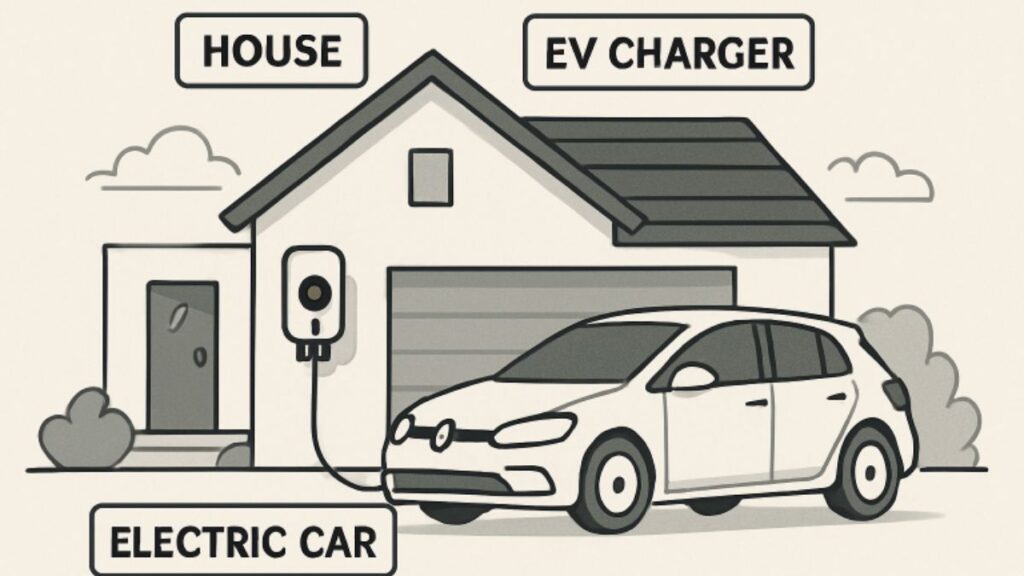Understanding EV Charger Types
Installing an electric vehicle charger at home can bring unmatched convenience, but it’s essential to begin by selecting the right equipment for your needs. There are primarily two types of residential EV chargers: Level 1 and Level 2. Level 1 chargers plug into a standard 120-volt outlet and offer about 3 miles of range per hour, making them suitable for drivers with short commutes or minimal daily driving. In contrast, Level 2 chargers require a 240-volt outlet, akin to what’s used for laundry dryers or ovens, and deliver up to 25 miles of range per hour. For comprehensive regional installation guidance, see EV charger installation Denver.
Most homeowners will appreciate the speed and convenience offered by Level 2 chargers, especially if their electric vehicle is used daily. While some plug-in hybrid or older EV models may get by with a Level 1 charger, battery size and driving range advances have made Level 2 options the standard recommendation for efficient overnight charging.
Assessing Your Home’s Electrical Capacity
Evaluating your home’s electrical system is a crucial safety step before selecting or installing an EV charger. A Level 2 charger typically requires a dedicated 240-volt, 30–50 amp circuit, which many older electric panels may not accommodate without upgrades. Only a certified electrician should assess your home’s capacity, as overloading your main panel can become a significant fire hazard. They will determine if your electrical system can safely support the additional demand or if panel upgrades and rewiring are necessary.
Choosing the Optimal Installation Location
Selecting the best spot for your EV charger balances convenience, accessibility, and durability. Prioritize proximity to your garage or driveway, which minimizes cable length and reduces installation costs. Evaluate how easily you can access the charger daily and consider factors like vehicle parking orientation and available walkway space.
Outdoor installations should be rated for weather resistance and shielded from direct rain, snow, or sun exposure to prevent damage. Indoor wall mounting in a garage typically extends equipment life and reduces exposure to harsh conditions. Discussing these details with your installer helps ensure you get a solution tailored to your home and usage patterns.
Understanding Installation Costs
The expense of installing a residential EV charger varies based on several factors: the chosen charger, installation complexity, and needed electrical panel upgrades. On average, expect to pay between $550 and $1,380 for installation. Final costs depend on cable run distance, whether the panel requires an upgrade, permit fees, and labor rates in your area. It’s best practice to collect quotes from at least three licensed electricians, which helps ensure competitive rates and quality service.
Exploring Available Incentives
Substantial incentives are available to make installing a home charger more affordable. The U.S. federal tax credit can offset up to 30% of total hardware and installation costs — a benefit capped at $1,000 for home installations. This credit expires on June 30, 2026, so it’s wise to act soon if you upgrade. Additionally, some state and local governments or utility companies offer rebates or time-of-use rates for EV owners; these can drive savings even further.
Considering Smart Charger Features
Many of today’s leading EV chargers come with smart technology, including Wi-Fi connectivity, mobile app support, and scheduling features. These allow you to monitor charging sessions, set reminders, or automatically start charging during off-peak hours when electricity rates are lower, which saves money over time. Mobile notifications also add peace of mind, informing you if something interrupts your charging or when it’s complete.
Ensuring Compliance with Local Regulations
Your city or neighborhood may have unique building codes and permit processes for EV charger installations. Securing all necessary permits and adhering to regulations is essential for insurance coverage and legal operation. A licensed electrician familiar with local codes can guide you through requirements and documentation, protecting you from fines or required rework down the road.
Planning for Future Needs
As EV technology evolves, it’s smart to plan for future growth when installing a home charger. You may eventually add a second electric vehicle to your household, require faster charging for longer commutes, or want compatibility with the latest high-capacity batteries. Investing in a slightly higher-capacity charger, additional wiring or conduit, or dual charging capability can save money and hassle later. Discuss your long-term plans with your electrician to ensure your installation supports both current and future needs.
Evaluating each of these factors ensures you get a safe, functional, and cost-effective EV charging setup. Home charging makes EV ownership seamless and convenient, while careful planning enhances long-term satisfaction and investment.






